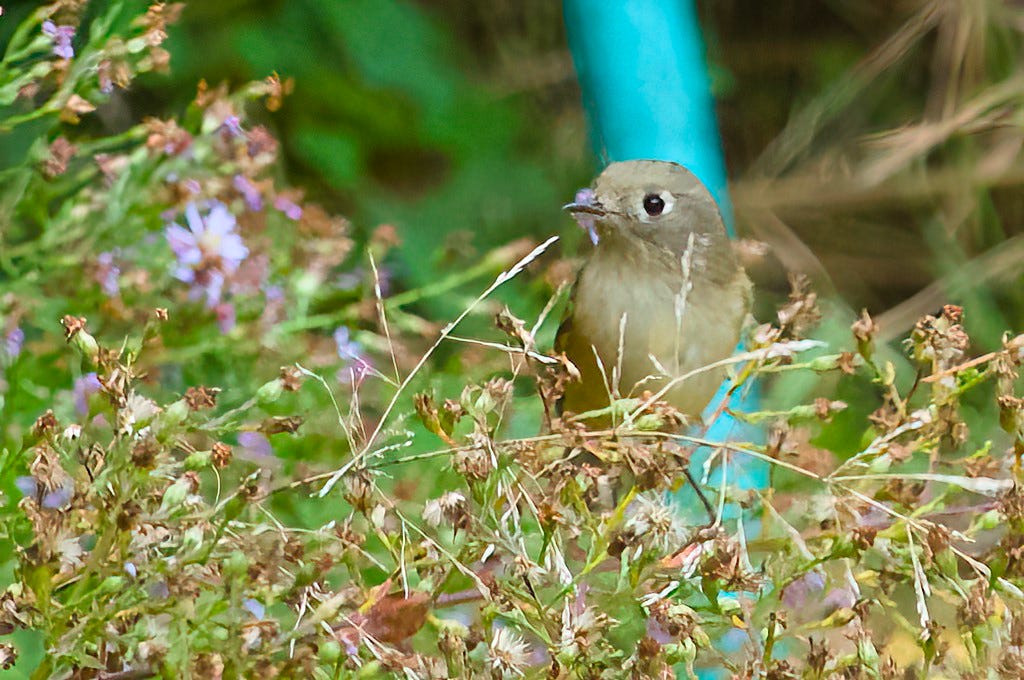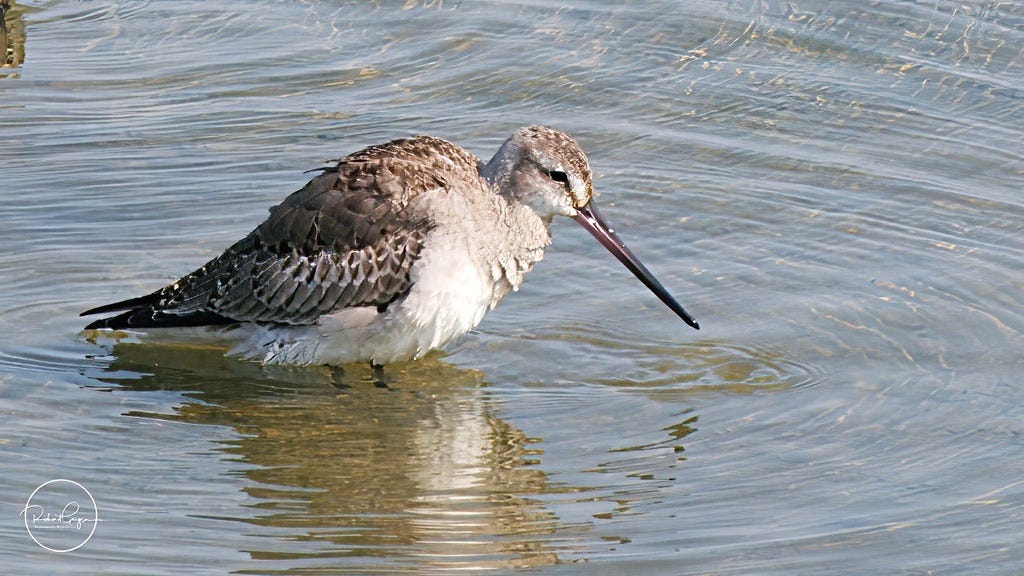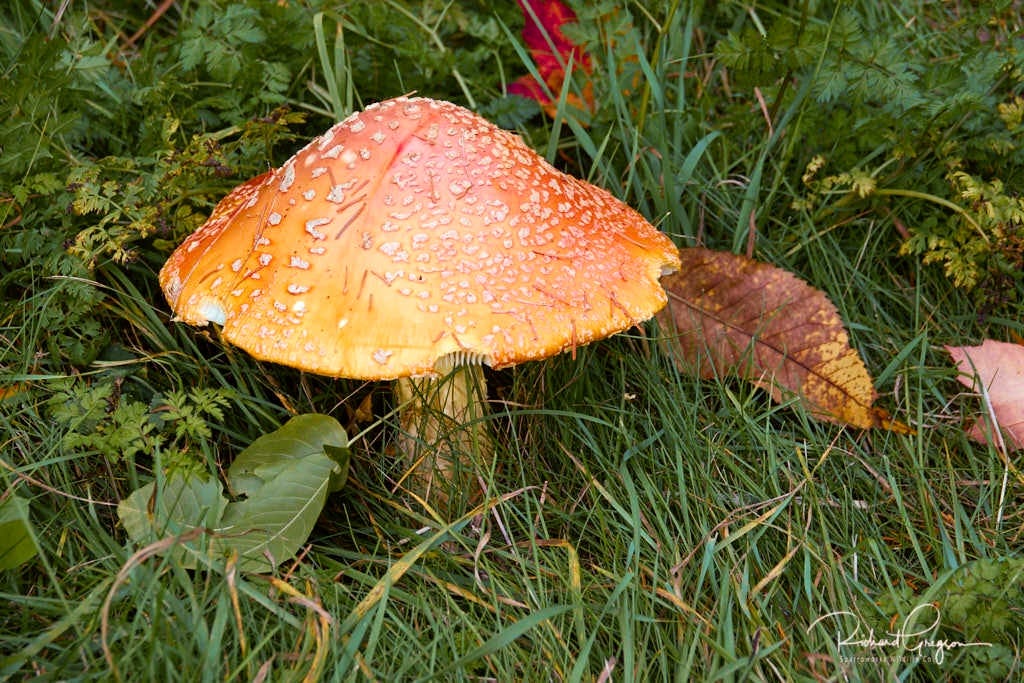On walking
Recent birds and a fungus found
Moving plants in the wildlife garden
The state of Canada’s birds
Plus - it’s Thanksgiving today north of the border
All this wildlife gardening, keeping fit-ish as one ages and looking for interesting species around town stuff involves a considerable amount of daily walking.
Which is not at all a bad thing. There is apparently an old saying - not that I had ever heard it before, but I cannot argue with the Guardian when it tells me such things, that the perfect walk has “something to see, somewhere to pee, and somewhere to get a cup of tea”. As I gently age I must say that this is something with which I find agreement.
Attributed to St Augustine, and plagiarized by many down the years since, is one answer to life’s trickier problems. He reportedly said, in Latin of course because he was a saint, Solvitur ambulando - "It is solved by walking”. I also read that the Spanish poet Antonio Machado (who?) informed us that “ … there is no path. The path is made by walking”.
All of which is to say that without our daily walks my two Substacks probably would not appear, or at least not so regularly. I have most certainly found far more than the titular 1001 Species whilst out walking. Lace up your boots and step forth …
Species found “Whilst Out Walking” on recent dates have been …
Taking a rest on its migration south was a rather forlorn looking Long-tailed Duck (Clangula hyemalis) in the waters off Ile Perrot. In their breeding finery they are one of the most strikingly beautiful of the northern waterfowl but I guess it has been a hard summer wherever it came from. Probably on its way to the Great Lakes to pass the cold months - not a common sighting hereabouts.
An anniversary. Twenty years ago, this week, a friend and I rushed out of work, forgoing our lunches, to stare at the river passing through the nearby small town of Hudson where a Hudsonian Godwit (Limosa haemastica) had been reported. A Hudsonian Godwit in Hudson … a pleasing coincidence and a more than somewhat rare species for Montreal as once they have set out on migration they usually keep going, pretty well non-stop. These are rather large sandpipers which breed near the tree line on the tundra but overwinter in South America or the Caribbean, a long migration. The ‘Hudsonian’ part of their name comes, as you will have discerned, from their affinity with Hudson’s Bay and not the small town in western Quebec.
So much for a couple of interesting birds to tickle the fancy of the many birders amongst my readers - time to move on. This is the season of year when fungi begin to get more interesting and spectacular in the woods so I would be remiss not to talk to you about one of the fungi (or fun guys as my spellchecker insists that I meant to say ) that is findable around here by walking. I walked, I searched, and I found the American yellow fly agaric (Amanita muscaria var. guessowii). Generally found growing under birch and spruce trees on acidic soils. They are also native to Northern Europe. Not the safest fungus to ingest … quote:
In Siberian civilizations, the fly agaric was prepared for religious and recreational purposes for centuries, as it was one of the only intoxication possibilities in this region. The active components of muscimol and ibotenic acid are excreted intact in urine, while negating some of the adverse side effects. In some Siberian tribes, like the Koryaks, reindeer were fed fly agaric mushrooms, and their urine was collected for drinking. This gave a second-hand stimulant effect that was much preferred, even if it meant drinking reindeer urine.
You do have to wonder, or at least I am wondering, what inspired some ancient Siberian native to drink reindeer urine, make the connection and discover this 😉
Unseen Biodiversity …
I have written several times that the spark that started this newsletter was the realization that a lot of people are interested in, fascinated by, the wildlife we live close beside in our communities but for one reason or another fail to see much of it. I now know that even I have not been trying - yesterday on Facebook I saw a picture of a rather nondescript brown beetle posted that was accompanied by the following observation …
Last night I photographed the 400th species of beetle in my southern Ontario backyard with this Plochionus timidus.
Clearly I am not trying hard enough. Next year, socks will have to be pulled up.
Lots of people like the idea of a native plant/pollinator gardens because they perceive the benefit that as native plants are suited to where they live and have evolved in place, they can be trusted to quietly go about their business while the “gardener” sits on the deck with a cool drink and counts the butterflies and bees.
Not so … all gardens need some management. In our case, end of summer changes this year have been needed because the sightline from the house to the pond and its waterfall was being obscured by flowers that had thrived a little too well and were twice the intended, or at least anticipated, height. This meant that some choice specimens of golden rod, various asters and Rudbeckia etc have had to be uprooted and squeezed in elsewhere. Not that that is a problem - whatever your style of gardening, there are always plants that you find have been placed in the wrong place. The sightline are now open again and we can sit in the warmth of the house watching creatures pottering about the waterfall. Around the end of the month the pond pump is usually switched off and retired for the winter … which means wading in the cold and quite deep water. Not particularly looking forward to that task.

On Learning to Make Jam (from garden fruits)
The State of Canada’s Birds
Birds Canada and Environment and Climate Change Canada a few days ago launched The State of Canada’s Birds 2024. It provides population assessments for 463 species regularly occurring in Canada. Some populations are in decline, some in free-fall while others are surviving surprisingly well. For example, grassland birds have declined by 67% since 1970, and some species like the Chestnut-collared Longspur have declined by a disheartening 95%. Yet, there are population growths too. Wetland species have increased by 21% overall for example over that half century despite facing some of the same challenges that grassland birds face – habitat loss – their recovery shows what is possible when conservation efforts are directed towards the species that need it most. You can read the report by following this link and a broad overview is shown in the following chart:
https://naturecounts.ca/nc/socb-epoc/main.jsp
To quote a brief summary from the BSC blog. There is still work to be done.
Grassland birds are in crisis.
Birds that live in Canada’s grasslands have declined by 67% since 1970. Some, like Chestnut-collared and Thick-billed Longspur, have declined by over 95%. There’s no question that these birds are in serious trouble. The single biggest threat to Canada’s grassland birds is the destruction and degradation of the native grasslands they need. Urgent action to conserve their habitat is needed to save these species.
Shorebirds are in steep decline.
Shorebirds in Canada have declined by 42% since 1980. Many nest in the Arctic or the Prairies, two places where climate change is causing problems. In the Arctic, the timing of seasonal events like insect emergence is changing. In the Prairies, both droughts and floods are becoming more frequent and severe. Most of Canada’s shorebirds migrate, so habitat loss puts them at risk both where they rest and refuel on their journeys, and where they spend their nonbreeding season. Shorebird conservation is a complex problem, and it requires ambitious solutions.
Aerial insectivore population declines have stabilized.
Aerial insectivores – birds that hunt for insects in flight – have declined by 43% since 1970, but that decline seems to be levelling off. For some species, populations may even be starting to rise. This is hopeful, but there are still far fewer of these birds than there once were. Continued efforts to understand the decline and recover populations are essential.
… And
Long-distance migrants as a group migrate primarily to tropical regions, and have declined by 29% since 1970. Habitat loss threatens them in all parts of their annual cycle, and their long journeys expose them to other risks. International cooperation is key to their conservation.
Many Arctic species are data deficient, meaning we don’t have enough information to know how they’re doing. Their remote habitats make them difficult to monitor. The data we have suggests they have declined by 28% since 1970. More research is needed for this group.
Reality is that which, when you stop believing in it, doesn’t go away. — Philip K. Dick















Lovely article and images Richard! I loved that 3 criteria for a good walk at the start 😂
People would rather believe that humans are not affecting wildlife populations in an adverse way so that they do not have to alter anything in how they live. Yet, ignorance is not bliss. It is a path to loss of so many of the beautiful avians that make our planet the wonderful habitat it is.
Can you imagine a world without birdsong?